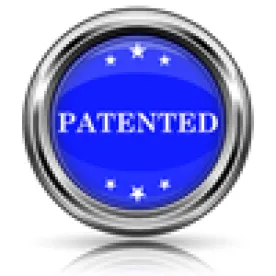Takeaway: In a motion to amend, the patent owner is not required to prove that the claims are patentable over every item of prior art known to a person of ordinary skill, but the patent owner is required to explain why the claims are patentable over the prior art of record.
In its Final Written Decision, the Board concluded that Petitioner had shown by a preponderance of the evidence that claim 1-4, 6, 8-11, 13, and 15 of the ’633 patent are unpatentable. The Board denied Patent Owner’s Motion to Amend.
The ’633 patent relates to a system for producing graphical images. Petitioner challenged claims 1-4, 6, 8-11, 13, and 15 as anticipated by Walton, and/or obvious over Eick and Kruglinski.
Regarding claim construction, Patent Owner argued that the Board’s interpretation of “an external shape stored outside the computer program” as recited in claims 1 and 8 is overly broad. Patent Owner proposed to add the words, “that can be developed and provided for use by the computer program without modifying the computer program.” The Board disagreed, stating that the passages of the Specification cited by the Patent Owner attribute the touted advantage to “an architecture” or “a system,” rather than to external shapes stored outside the computer program. The Board also maintained its interpretations of “delegate,” “external action,” and “external symbol” in the absence of any challenge by either party.
Patent Owner alleged that Walton does not anticipate claims 1 and 8 because it does not disclose the “external shapes” limitation. Patent Owner asserted that Petitioner mistakenly relies upon the “user code” in Walton’s system as the “computer program” recited in the claims. Patent Owner alleged that the user code interfaces with the VSE system, and it is the VSE system, not the graphical objects themselves, which produces graphical images. Patent Owner argued, relying upon testimony by Mr. Kitchen, that Petitioner has misapprehended that statement in Walton regarding “a graphical object…must be able to draw itself if asked to do so and to indicate that it has been selected.” According to Patent Owner, this statement means that, from a user’s perspective, a graphical object must be able to draw itself when requested via user interaction. The Board disagreed with Patent Owner’s interpretation of Walton, concluding that Walton’s graphical objects are stored outside the user code as recited in the claims of the ’633 patent.
On the basis of the testimony of Petitioner’s expert and the above analysis, the Board concluded that Petitioner had established, by a preponderance of the evidence that claims 1 and 8 of the ’633 patent are anticipated by Walton. Similarly, the Board concluded claims 2-4, 6, 9-11, 13, and 15 are anticipated by Walton. Because the Board determined that all of the challenged claims are anticipated by Walton, it did not reach a conclusion regarding Petitioner’s obviousness challenge based on Eick and Kruglinski.
Patent Owner sought to substitute new claims 29 and 30 for claims 1 and 8 in its Motion to Amend. Patent Owner alleged that an “eternal shape template” is a generic interface for accessing capabilities of an external shape.” The Board determined that the broadest reasonable interpretation consistent with the Specification of an “external template” is a template by which a computer program can access an external shape stored outside the computer program to utilize the capabilities of the external shape. The Board, therefore, declined to adopt Patent Owner’s claim construction because it does not capture sufficiently the meaning of “template.”
The Board noted that Patent Owner bears the burden of showing the proposed claims are patentable over the prior art. Petitioner argued that Patent Owner’s Motion to Amend fails to include any discussion regarding the understanding of the ordinary skill in the art with respect to the use of templates. Petitioner argued that the use of templates was well known in the prior art, particularly in the field of computer graphics programming and provided a prior art programming manual authored by Stroustrup in support of this contention. Patent Owner countered that Petitioner’s other reference simply teaches software templates completely divorced from the context of the claimed invention.
The Board concluded that Patent Owner had not demonstrated a patentable distinction over the prior art of record. In particular, the Board concluded that Patent Owner has failed to come forward with sufficient technical facts and reasoning about the newly-added feature to establish that the proposed substitute claims are patentable over the prior art of record. Regarding Patent Owner’s Motion for Observations Regarding Cross-Examination, the Board concluded that Patent Owner did not direct the Board to any cross-examination of Dr. Lastra challenging the testimony. Patent Owner argued that only hindsight suggests using an external shape template in Walton’s system. The Board stated that Patent Owner ignores Stroustrup in this argument. Thus, the Board denied Patent Owner’s Motion to Amend.
GOOGLE INC., SAMSUNG ELECTRONICS AMERICA, INC., and SAMSUNG ELECTRONICS CO., LTD. v. MICROFRAFX, LLC, IPR2014-00532
Paper 40: Final Written Decision
Dated: July 21, 2014
Patent 5,959,633
Before: Sally C. Medley, Richard E. Rice, and Barbara A. Parvis
Written by: Rice
Related proceedings: Micrografx, LLC v. Google, Inc., No. 3:13-cv-03595-N (N.D. Tex.), and Micrografx, LLC v. Samsung Telecommun-ications America, LLC, No. 3:13-cv-03599-N (N.D. Tex.)



 />i
/>i

